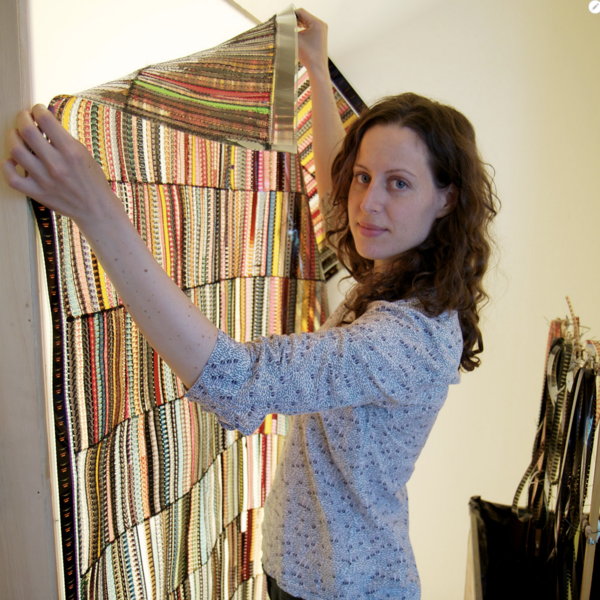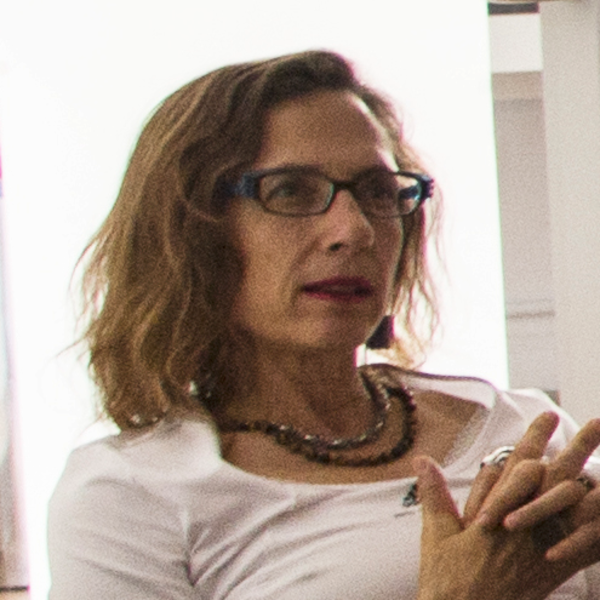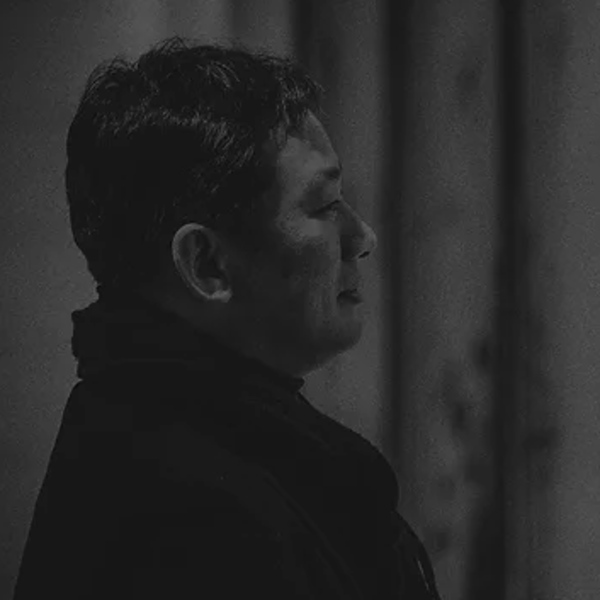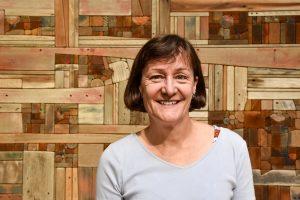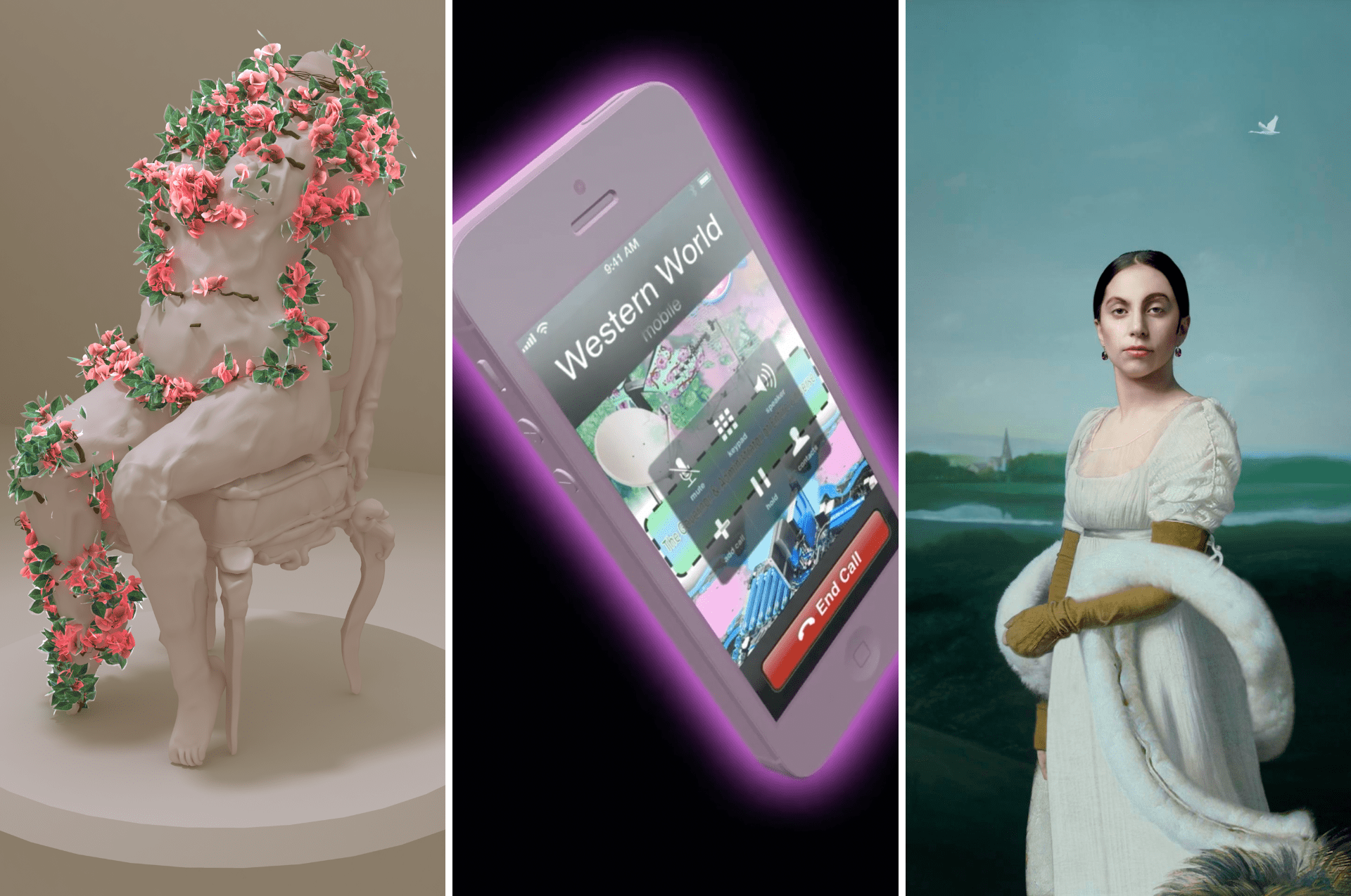
The Weisman's spring 2023 exhibition, Message from Our Planet: Digital Art from the Thoma Collection, brings together software, video, and light-technology artworks from 19 international artists working at the forefront of digital and electronic art. Message from Our Planet proposes that media technologies―from vintage devices to cutting-edge digital algorithms―offer distinct ways for artists to communicate with future generations, encapsulating the artifacts and ambitions of contemporary society. Through the exhibition, we imagine a digital future where art communicates beyond our common era through computer code. Exhibition curator Jason Foumberg says, "Message from Our Planet was inspired by the interstellar time-capsule Voyager 1, a spacecraft containing a record of human culture launched into outer space by NASA in 1977. I wanted this group exhibition to evoke a similar multivocal message by artists who share a human desire to be understood across time and space."
Artists: Brian Bress, Lia Chaia, Sabrina Gschwandtner, Hong Hao, Matthew Angelo Harrison, Claudia Hart, Jenny Holzer, Eduardo Kac, Lee Nam Lee, Christian Marclay, Paul Pfeiffer, Tabita Rezaire, Michal Rovner, Jason Salavon, Elias Sime, Skawennati, Penelope Umbrico, UVA (United Visual Artists), and Robert Wilson
Curated by Jason Foumberg, Curator of Digital Art for the Carl and Marilynn Thoma Foundation
Image credits (top) L to R: Claudia Hart, The Seasons (still), 2009. Video with sound on monitor with artist's frame; Tabita Rezaire, Sorry for Real (still), 2015. Digital video with sound; Robert Wilson, LADY GAGA: Mademoiselle Carole Rivière (still), 2013. Digital video with sound on monitor. Courtesy of the Carl and Marilynn Thoma Foundation.
Brian Bress
Brian Bress is an American video artist living and working in Los Angeles. Bress received a BFA in film, animation and Video from the Rhode Island School of Design in Providence, Rhode Island in 1998, an MFA in Painting and Drawing from the University of California, Los Angeles in 2006.
Lia Chaia
Lia Chaia (São Paulo, 1978) lives and works in São Paulo.
She graduated from the Armando Álvares Penteado Foundation in Plastic Arts, in 2003.
In her work, she studies the daily life, culture vs. nature, tension vs. lightens, urban vs. rural. Her research also focuses on the body and its reactions to the ruptures and stimulus of the day-to-day. As a result, she uses all sorts of media in her pieces: performance, installation, video, photography.
Sabrina Gschwandtner
Sabrina Gschwandtner is a visual artist and filmmaker. Her work has been exhibited and screened internationally, at the Smithsonian American Art Museum; the Victoria and Albert Museum; the Museum of Arts and Design; Los Angeles County Museum of Art (LACMA); Crystal Bridges Museum of American Art, and Brooklyn Academy of Music (BAM), among many others.
Skawennati
Skawennati investigates history, the future, and change from her perspective as an urban Kanien’kehá:ka woman and as a cyberpunk avatar. Her machinimas, still images, textiles and sculpture have been presented internationally and are included in the collections of the National Gallery of Canada, the Musée d’art contemporain de Montreal and the Thoma Foundation, among others.
Recipient of an Honorary Doctorate from the Minneapolis College of Art and Design, she is also a founding board member of daphne, Montreal’s first Indigenous artist-run centre. She co-directs Aboriginal Territories in Cyberspace, a research-creation network based at Concordia University, where she received her BFA. Originally from Kahnawà:ke Mohawk Territory, Skawennati resides in Montreal. She is represented by ELLEPHANT.
Hong Hao
Since the early 1990s, Hong Hao has been manipulating images—of world maps, Chinese scroll paintings, commercial advertisements, and his own possessions—to satirize contemporary China and its post-Mao ascendancy to global political and economic power. Working in series, and primarily using photography, Hong disrupts the historical, commercial, and authoritarian narratives that shape perceptions of Chinese society and culture. Among his earliest works is Selected Scriptures (1992-2012), a pseudo world atlas filled with maps visibly altered by such dominant forces as multinational corporations and military might. He is best known for “My Things” (begun 2001), a series of photographic prints of his seemingly unquantifiable possessions. Collaged into mesmerizingly detailed, formally and chromatically sophisticated compositions, these images of Hong’s “things” are portraits of the artist himself and of the communist-capitalist society he so effectively critiques in all of his work.
Matthew Angelo Harrison
Matthew Angelo Harrison is an American artist living and working in Detroit, MI. His work investigates analog and digital technologies to explore ancestry, authenticity, and the relationship between African culture and African-American culture.
Claudia Hart
Claudia Hart emerged as part of a generation of 90s intermedia artists examining issues of identity and representation. Since the late 90s when she began working with 3D animation, Hart embraced these same concepts, but now focusing on the impact of computing and simulations technologies. She was an early adopter of virtual imaging, using 3D animation to make media installations and projections, and later as they were invented, other forms of VR, AR and objects produced by computer-driven production machines. At the School of the Art Institute of Chicago, where she is a Professor, she developed a pedagogic program based on her practice - Experimental 3D - the first dedicated solely to teaching simulations technologies in an art-school context.
Jenny Holzer
Jenny Holzer has presented her astringent ideas, arguments, and sorrows in public places and international exhibitions, including the Venice Biennale, the Guggenheim Museums in New York and Bilbao, the Whitney Museum of American Art, and the Louvre Abu Dhabi. Her medium, whether a T-shirt, plaque, or LED sign, is writing, and the public dimension is integral to her work. Starting in the 1970s with her New York City street posters and continuing through her light projections on landscape and architecture, her practice has rivaled ignorance and violence with humor and kindness.
Eduardo Kac
Eduardo Kac is internationally recognized for his groundbreaking work in contemporary art and poetry. In the early 1980s, Kac created digital, holographic and online works that anticipated the global culture we live in today, composed of ever-changing information in constant flux. In 1997 the artist coined the term "Bio Art," igniting the development of this new art form with works such as his transgenic rabbit GFP Bunny (2000) and Natural History of the Enigma (2009), which earned him the Golden Nica, the most prestigious award in the field of media art. GFP Bunny has become a global phenomenon, having been appropriated by major popular culture franchises such as Sherlock, Big Bang Theory and Simpsons, and by writers such as Margaret Atwood and Michael Crichton. In 2017, Kac created Inner Telescope, a work conceived for and realized in outer space with the cooperation of French astronaut Thomas Pesquet. Kac’s singular and highly influential career spans poetry, performance, drawing, printmaking, photography, artist's books, early digital and online works, holography, telepresence, bio art, and space art.
Lee Nam Lee
South Korean artist Lee Lee Nam (b.1969) creates amalgamations of today's high-tech environment and traditional culture. With exceptional finesse, he creates mesmerising digital and video works that juxtapose European old master paintings and traditional Asian art with modern day imagery. The artworks are overlaid and interwoven like a palimpsest, creating an image as fictitious as dreams overlapping reality.
Lee Lee Nam believes that video can express the human imagination more thoroughly than other media and is able to convey atmosphere and surprise more readily than traditional art forms. According to the artist, he hopes his work is a way for him to give something back to the people, to create a moment of quiet and calm in a busy modern world. However, there seems to be more in Lee Lee Nam's creations than beauty alone: references to today's consumerism and label-orientated modern societies suggest a more complex and critical narrative.
Christian Marclay
Christian Marclay is a visual artist and composer. He holds both American and Swiss nationality.
Marclay's work explores connections between sound, noise, photography, video, and film. A pioneer of using gramophone records and turntables as musical instruments to create sound collages, Marclay is, in the words of critic Thom Jurek, perhaps the "unwitting inventor of turntablism." His own use of turntables and records, beginning in the late 1970s, was developed independently of but roughly parallel to hip hop's use of the instrument.
Paul Pfeiffer
Paul Pfeiffer was born in Honolulu, Hawaii, in 1966 but spent most of his childhood in the Philippines. Pfeiffer relocated to New York in 1990, where he attended Hunter College and the Whitney Independent Study Program. Pfeiffer’s groundbreaking work in video, sculpture, and photography uses recent computer technologies to dissect the role that mass media plays in shaping consciousness.
Tabita Rezaire
Tabita Rezaire is a French new media artist of Guyanese and Danish descent, "health-tech-political" therapist, and "kemetic" and kundalini yoga teacher. She has presented her work at the Goodman Gallery in Johannesburg, Arebyte Gallery, London, the Athens Bienniale, MAXXI, Rome, and Artspace, Sydney.
Michal Rovner
Michal Rovner, also known as Michal Rovner Hammer, is an Israeli contemporary artist. She is known for her video, photo, and cinema artwork. Rovner is internationally known with exhibitions at major museums, including the Louvre (2011) and the Whitney Museum of American Art.
Jason Salavon
Using software processes of his own design, Jason Salavon generates and reconfigures masses of communal material to present new perspectives on the familiar. Though formally varied, his projects frequently manipulate the roles of individual elements derived from diverse visual populations. This often unearths unexpected patterns in the relationship between the part and the whole, the individual and the group. Reflecting a natural attraction to popular culture and the day-to-day, his work regularly incorporates the use of common references and source material. Often, the final compositions are exhibited as art objects – such as photographic prints and video installations – while others exist in a real-time software context.
Elias Sime
Elias Sime (b.1968 Addis Ababa, Ethiopia) deftly weaves, layers and assembles carefully selected everyday materials, transforming commonplace items into lyrical abstract compositions that suggest topography, figuration, and color fields. He often creates intricate works from electronic components—including circuit boards, computer keys, and telecommunications wires. For Sime, the history of these materials hold meaning and their significance emerges after thorough consideration. They suggest the tenuousness of our interconnected world, alluding to the frictions between tradition and progress, human contact and social networks, nature and the man-made, and physical presence and the virtual.
Sime’s work achieves effects from dense narrative to austere modernist abstraction. He is as interested in a stripped motherboard from a mobile phone as he is an animal skull or worn-out button: the artist looks past the emotional weighting of new versus old, instead finding renewal everywhere, and taking greatest interest in the way that objects and ideas can connect in new ways.
Penelope Umbrico
Penelope Umbrico’s installations, video, and digital media works utilize photo-sharing and consumer-to-consumer websites as an expansive archive to explore the production and consumption of images. Her work navigates between producer and consumer, local and global, the individual and the collective, with attention to the technologies that are produced by (and produce) these forces.
Robert Wilson
Since the late 1960s, Robert Wilson's productions have decisively shaped the look of theater and opera. Through his signature use of light, his investigations into the structure of a simple movement, and the classical rigor of his scenic and furniture design, Wilson has continuously articulated the force and originality of his vision. Wilson's close ties and collaborations with leading artists, writers, and musicians continue to fascinate audiences worldwide.
Image 2013 Yiorgos Kaplanidis


